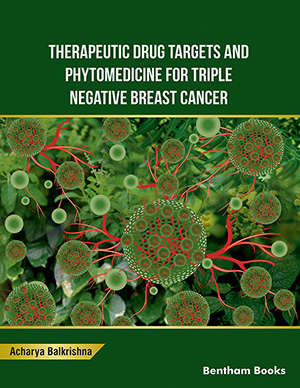Abstract
The tumor microenvironment of TNBC cells was associated with the induction of angiogenesis, proliferation, apoptosis inhibition, immune suppression, and drug resistance. TME creates a niche for the survival and interaction of cancer cells with surrounding cells. TME promoted epithelial to mesenchymal transition, stemness, and chemoresistance and ensured the escape of TNBC cells from the chemotherapeutic and immunological responses. This chapter highlighted the role of cancer stem cells, hypoxia, lysosomal biomass, tumor-associated macrophages, PTEN, PI3K/Akt/mTOR pathway, and ABC transporters in inducing resistance against standard therapeutic regimens. The possible role of miRNA, transcriptional signatures, and tumorinfiltrating lymphocytes as a predictor of chemoresistance was also depicted. The impact of drug repurposing and combinational therapeutic approach to overcome the obstacle of chemoresistance have been underlined in this chapter for the treatment of TNBC.
Keywords: ABC transporters, Cancer stem cells, Cardiotoxicity, Chemoresistance, Chemo-sensitization, Clinical trials, Combinational therapy, Drug repurposing, Hypoxia, Immunosuppression, Iymphocytic infiltration, Iysosomes, MiRNAs, Monotherapy, Myelosuppression, Pgp, PI3k/Akt/mTOR, PTEN, TAM, Transcriptional signatures, Uprosertib.






















